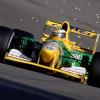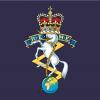
Which technologies was implemented in road cars that originated in motorsport (F1 in particular )
#1

Posted 02 November 2011 - 23:13
i would like know all the technologies or devices that originated and invented in F1 or motorsport in general and can be found in our road cars today . would be great if you mention also the old ones like in 60s or 70s. i think may be traction control is one of them right ?
at least you take a break from hamilton-massa schumey-rosberg kimi-williams arguments
Advertisement
#2

Posted 02 November 2011 - 23:34
Perhaps this shoud be in either the Nostalgia or Technical Forum.hi all,
i would like know all the technologies or devices that originated and invented in F1 or motorsport in general and can be found in our road cars today . would be great if you mention also the old ones like in 60s or 70s. i think may be traction control is one of them right ?
at least you take a break from hamilton-massa schumey-rosberg kimi-williams arguments
Anyway, the most well known ones are disc brakes.
Patented in 1902, but the automotive industry only really gave notice when Jaguar used them on their Le Mans winning sports cars in the early fifties.
#3

Posted 02 November 2011 - 23:44
#4

Posted 02 November 2011 - 23:48
Also, this one for sure: downforce. Except that's only for performance road cars. Of course, the monocoque chassis, the usage of carbon fiber in the construction of the car (and aluminium before that, probably)...
#5

Posted 02 November 2011 - 23:52
Didnt Williams test that in 1992?
#6

Posted 02 November 2011 - 23:54
I can't be sure, but turbocharging? Probably supercharging? Direct injection (or whatever we now have that we didn't with carburetors)? I think these were not invented for F1 cars but were developed in F1 and that development bled into the road car industry.
Also, this one for sure: downforce. Except that's only for performance road cars. Of course, the monocoque chassis, the usage of carbon fiber in the construction of the car (and aluminium before that, probably)...
Turbochargers were used in aircraft more than 60 years ago. Dunlop disc brakes were first used on aircraft - Not much was first used in F1, but a heck of a lot was made usable by development in F1.
#7

Posted 02 November 2011 - 23:56
greaaat
#8

Posted 02 November 2011 - 23:57
Extensive use of carbon Fibre.
#9

Posted 02 November 2011 - 23:59
CVT?
Didnt Williams test that in 1992?
Dutch company DAF started selling CVT road cars in 1959.
#10

Posted 03 November 2011 - 00:02
Yes, a full 34 years after the introduction of DAF's Variomatic system, and already pioneered in the 1920sCVT?
Didnt Williams test that in 1992?
http://en.wikipedia.org/wiki/DAF_600
#11

Posted 03 November 2011 - 00:05
CVT , ABS . its like almost every technology now is developed from F1
#12

Posted 03 November 2011 - 00:06
#13

Posted 03 November 2011 - 00:09
Yes, a full 34 years after the introduction of DAF's Variomatic system, and already pioneered in the 1920s

http://en.wikipedia.org/wiki/DAF_600
thats very impressive !! but did f1 add anything to CVT ? did f1 make it easier to be implemented and developed ?
#14

Posted 03 November 2011 - 00:09
That's not true - see e.g. above.so we have turbocharging , tractio control , active suspension , overhead cams , sequential gearbox, fuel injection
CVT , ABS . its like almost every technology now is developed from F1
#15

Posted 03 November 2011 - 00:14
not sure, but safety belts?
no , according to wiki it has been there sincs 1950 from Ford , Nash and Saab
#16

Posted 03 November 2011 - 00:14
Edited by Speed_Racer, 03 November 2011 - 00:14.
#17

Posted 03 November 2011 - 00:15
That's not true - see e.g. above.
yeah yeah this was before your post
#18

Posted 03 November 2011 - 00:17
Paddle Shifters (?)
of course because of sequential gearbox
#19

Posted 03 November 2011 - 12:54
Advertisement
#20

Posted 03 November 2011 - 13:35
#21

Posted 03 November 2011 - 13:48
#22

Posted 03 November 2011 - 14:07
Pretty much nothing useful for road cars has actually originated in motorsport. Motorsport has often taken ideas from aerospace, or the flow has been from road cars TO the race track. Someone mentioned monocoques, but road cars were monocoque when race cars were still using space frames. I am struggling to think of anything significant that has come from motorsport into road cars. Maybe the KERS thing is going to be useful in the future as it is refined for production cars, although regenerative sytems are hardly new - the railways have used them for years.
ABS
If that's not important I don't know what is. Unless of course ABS came from elsewhere...
#23

Posted 03 November 2011 - 14:11
ABS
If that's not important I don't know what is. Unless of course ABS came from elsewhere...
Came from the aircraft industry. Gabriel Voisin.
#24

Posted 03 November 2011 - 15:50
#25

Posted 03 November 2011 - 16:05
Where's my 5-second pitstops dammit!
#26

Posted 03 November 2011 - 16:12
#27

Posted 03 November 2011 - 17:50
how about tyre pressure sensors?
#28

Posted 03 November 2011 - 18:03
Pretty much nothing useful for road cars has actually originated in motorsport. Motorsport has often taken ideas from aerospace, or the flow has been from road cars TO the race track. Someone mentioned monocoques, but road cars were monocoque when race cars were still using space frames. I am struggling to think of anything significant that has come from motorsport into road cars. Maybe the KERS thing is going to be useful in the future as it is refined for production cars, although regenerative sytems are hardly new - the railways have used them for years.
I believe the only thing that can be truly said to have come from motorsport to the road car is the rear view mirror. Everything else has their origins elsewhere.
#29

Posted 03 November 2011 - 18:11
I believe the only thing that can be truly said to have come from motorsport to the road car is the rear view mirror. Everything else has their origins elsewhere.
watch this video again of leo
#30

Posted 03 November 2011 - 18:18
watch this video again of leo
I watched the video and most (if not all) of the list of things he claims came from racing\F1 is plainly wrong. I'll stick with the rear view mirror being the only thing to truly have come from racing.
Edited by Clatter, 03 November 2011 - 18:20.
#31

Posted 03 November 2011 - 18:22
windscreen wipers came from le mans
Well, not really.
#32

Posted 03 November 2011 - 18:25
Chapman Strut, pretty obvious where that came from.
Those are the only 2 I can think of that came directly from motorsports.
#33

Posted 03 November 2011 - 18:30
I can't be sure, but turbocharging? Probably supercharging? Direct injection (or whatever we now have that we didn't with carburetors)? I think these were not invented for F1 cars but were developed in F1 and that development bled into the road car industry.
Also, this one for sure: downforce. Except that's only for performance road cars. Of course, the monocoque chassis, the usage of carbon fiber in the construction of the car (and aluminium before that, probably)...

Thats a 1929 Bentley, the silver thing in the front is a supercharger, this is how they were raced at circuits like Brooklands.
Both England and Germany fitted superchargers(and water injection) to their fighter planes during WWII.
Spitfires had nitrous oxide (or NOS to the kids), not sure about the ME109.
Mechanical fuel injection has been around for years - again the Messerschmitt 109 had it, which was an advantage over the spitfire as it meant the aircraft could be put in a hard dive and not stall - the Spitfire had carburettors, which relied on gravity for fuel flow, this meant that when put in a hard dive the engine would stall due to lack of fuel.
Electronic fuel injection was pioneered by Bendix in the USA in the late 50s for AMC.
Direct injection seems to of appeared in the early 70s, again with AMC but didn't really become common until the mid 90s.
Monocoque chassis were first produced in the early 30s.
Extensive use of carbon Fibre.
Taken from the aircraft industry.
#34

Posted 03 November 2011 - 18:30
windscreen wipers came from le mans
how about tyre pressure sensors?
Not even close.
http://en.wikipedia....indscreen_wiper
The inventor Mary Anderson is credited with devising the first operational windshield wiper in 1903.[1][2] In Anderson's patent, she called her invention a "window cleaning device" for electric cars and other vehicles. Operated via a lever from inside a vehicle, her version of windshield wipers closely resembles the windshield wiper found on many early car models. Anderson had a model of her design manufactured, then filed a patent (US 743,801) on June 18, 1903 that was issued to her by the US Patent Office on November 10, 1903.[3][4]
http://en.wikipedia....nitoring_system
#35

Posted 03 November 2011 - 18:33
Chapman Strut, pretty obvious where that came from.
Never heard of that, do you mean the McPherson strut ? named after its inventor Earle McPherson who invented it for Ford in 1949.
It seems it had roots in an earlier design by FIAT in the 20s.
#36

Posted 03 November 2011 - 18:34
I believe the only thing that can be truly said to have come from motorsport to the road car is the rear view mirror. Everything else has their origins elsewhere.
What do you mean? Rarely do I set off on a motorway journey without my 40-pack of visor tear-offs.
#37

Posted 03 November 2011 - 18:36
What do you mean? Rarely do I set off on a motorway journey without my 40-pack of visor tear-offs.
Still not got that windscreen fixed?
#38

Posted 03 November 2011 - 18:39
Still not got that windscreen fixed?;)
I had to take it out when I was installing my HANS device.
#39

Posted 03 November 2011 - 18:55
Advertisement
#40

Posted 03 November 2011 - 20:01
#41

Posted 03 November 2011 - 20:11
#42

Posted 03 November 2011 - 20:11
#43

Posted 03 November 2011 - 23:13
Disc brakes.
Nope, try again.
#44

Posted 03 November 2011 - 23:14
If the question is about "core technologies that were invented in F1" that list is going to be pretty short. If the question is about "technologies which were invented elsewhere but were developed in F1 and some of those developments/refinements found their way to road cars" that list will be a bit longer, but is harder to quantify. Teams like Honda, BMW, and Ferrari have moved engineers back and forth between racing and road car development. Ferrari's road-going semi-automatic transmissions and Honda's fuel injection certainly contain a lot of stuff they learned racing.
That's the whole point. F1 doesn't invent things, it takes from elsewhere and refines it for racing use.
#45

Posted 04 November 2011 - 06:04
I know, not really a 'specific' technology, but the ideas for chasis, gearbox, aero design, LED lights on the steering wheel which indicate when to change gears etc all came from Ferrari's F1 programme. Which means this particular car (among others in Ferrari) has directly originated from the F1 teams innovations and design documents.
#46

Posted 04 November 2011 - 06:25
Flappy paddle gearbox a la Ferrari 640
& the rear diffuser either real or fake which you see a lot of today.
#47

Posted 04 November 2011 - 08:11
The only one that seems to pass the sniff test for inclusion is the "rear view mirror" and that wasn't an F1 thing, from what I hear.
Nope, it was in use on horse drawn carriage at least by 1904
from Wikipedia:
The rear-view mirror's earliest known use and mention is by Dorothy Levitt in her 1906 book The Woman and the Car which noted that women should "carry a little hand-mirror in a convenient place when driving" so they may "hold the mirror aloft from time to time in order to see behind while driving in traffic", thereby inventing the rear view mirror before it was introduced by manufacturers in 1914.[1] The earliest known rear-view mirror mounted on a motor vehicle appeared in Ray Harroun's Marmon racecar at the inaugural Indianapolis 500 race in 1911.[2] Although Harroun's is the first known use of such a mirror on a motor vehicle, Harroun himself claimed he got the idea from seeing a mirror used for the same purpose on a horse-drawn vehicle in 1904.[3]
Out of interest whilst I was in Wiki I slung in some others:
World’s first supercharger - 1878
Turbocharger patented - 1905
Disc brake patented - 1902
Regenerative braking - 1903 trams / Krieger landulette c1904
ABS - 1929 aircraft
Carbon brakes - military aircraft
Flappy paddle gearbox - I recall seeing a modified car (Ford Escort?) for a disabled person which had mechanical flappy paddles 25+ years ago
I'm not sure there is anything that can be attributed to F1?
EDIT: bad stewarding maybe?
Edited by Stormsky68, 04 November 2011 - 08:21.
#48

Posted 04 November 2011 - 08:44
so we have turbocharging , tractio control , active suspension , overhead cams , sequential gearbox, fuel injection
CVT , ABS . its like almost every technology now is developed from F1
Like funny you do, NOTHING originated from F1.
London buses had sequebtial gearboxes in the 50's and tanks had them in WW2.
Citreon had active suspension in the 60's.
Peugeot had DOHC 4 valves at the turn of the century.
There have been many forms of traction control but electronically controlled belongs to Volvo in the 70's
Jenson road cars had ABS 60's
BMW 2002 Turbo road car early 70's
FI forever
#49

Posted 04 November 2011 - 09:16
Jenson road cars had ABS 60's
Would that be the Intercoptor ?
#50

Posted 04 November 2011 - 11:17





























